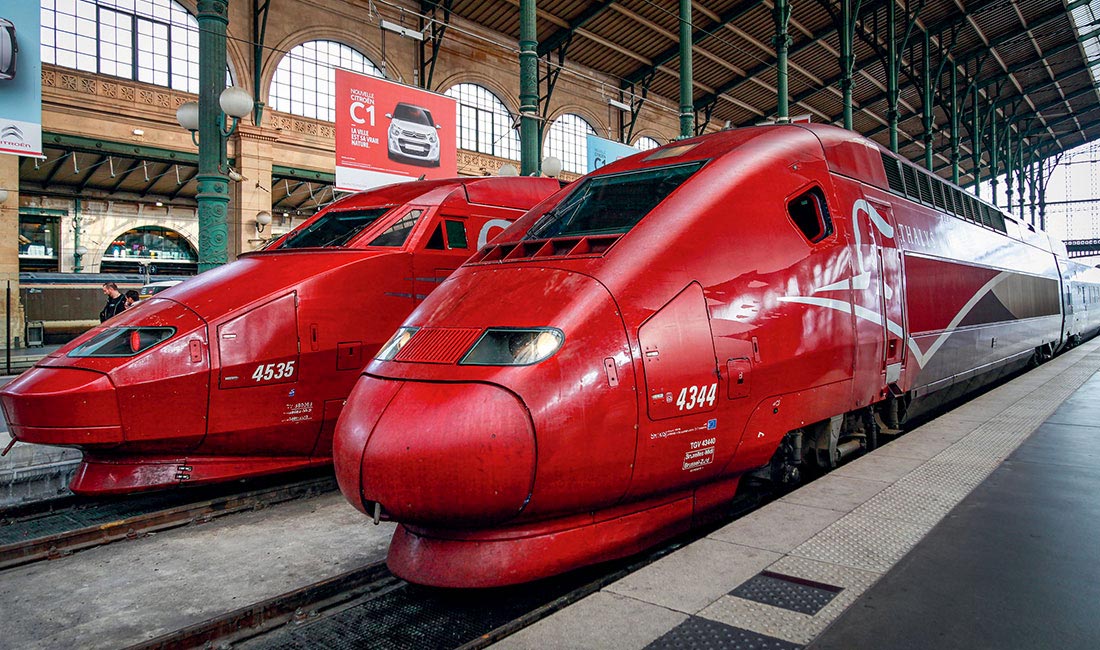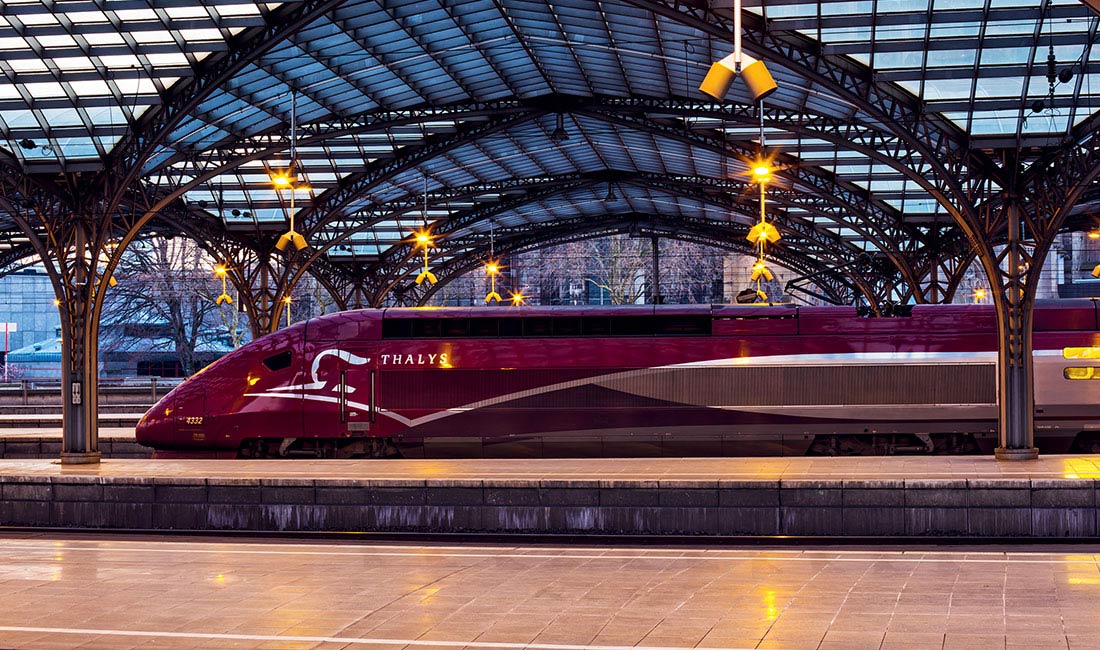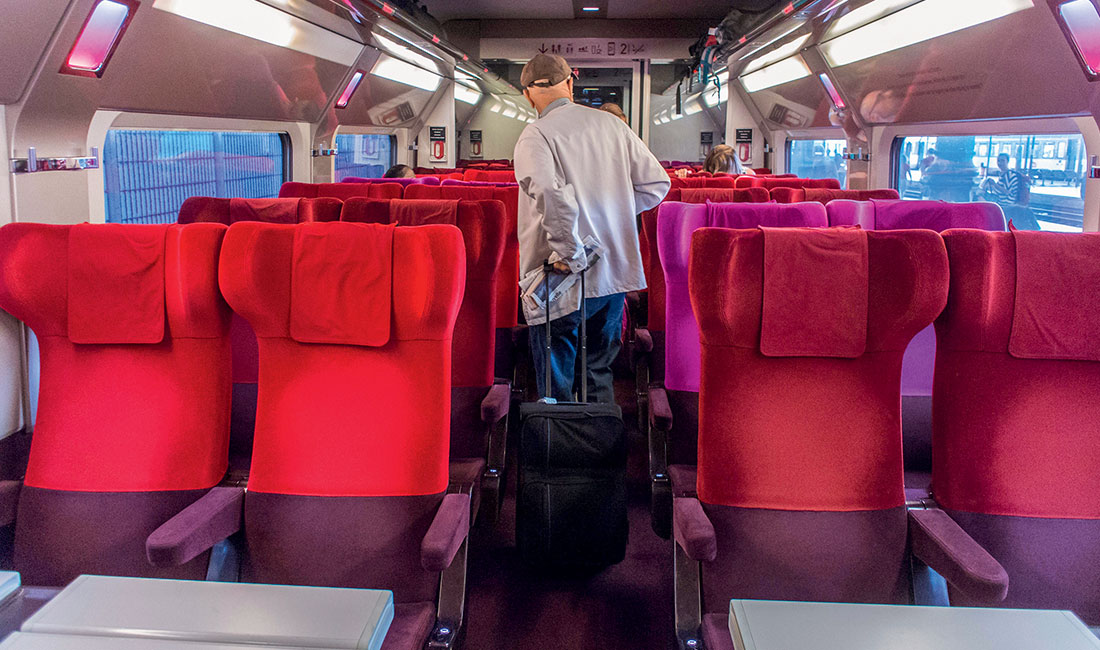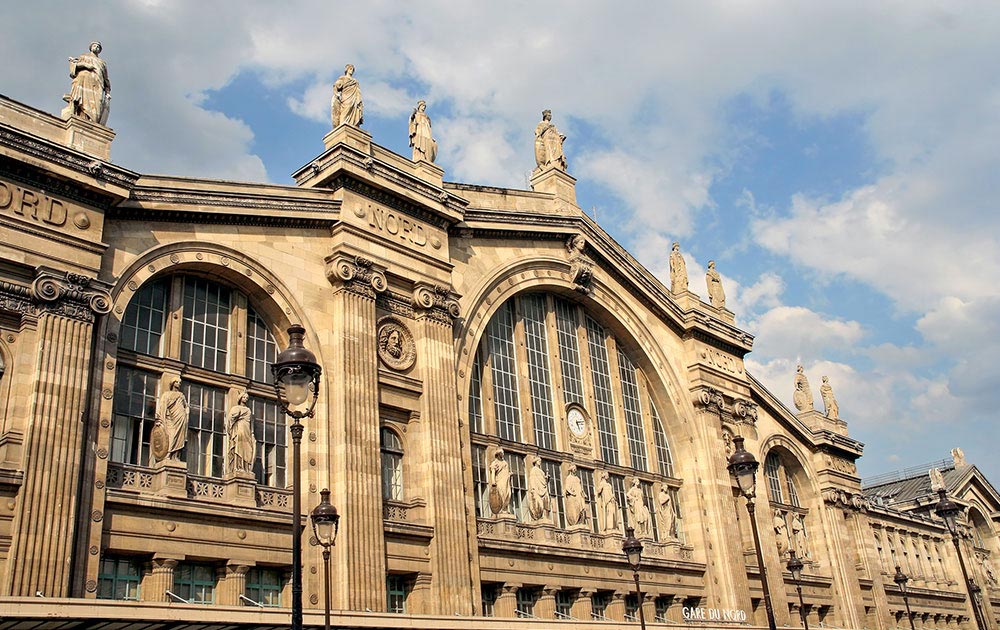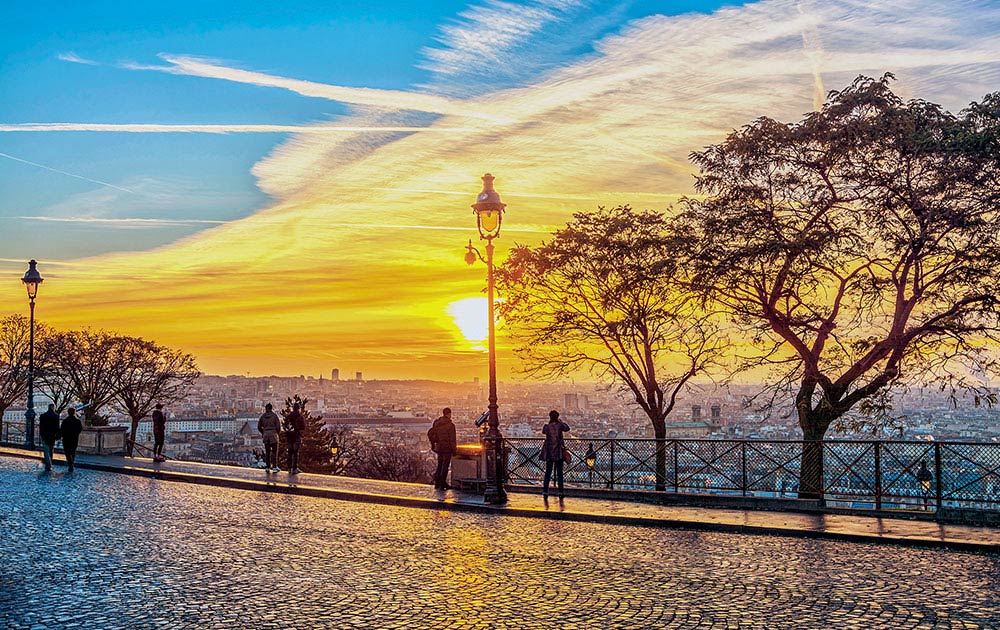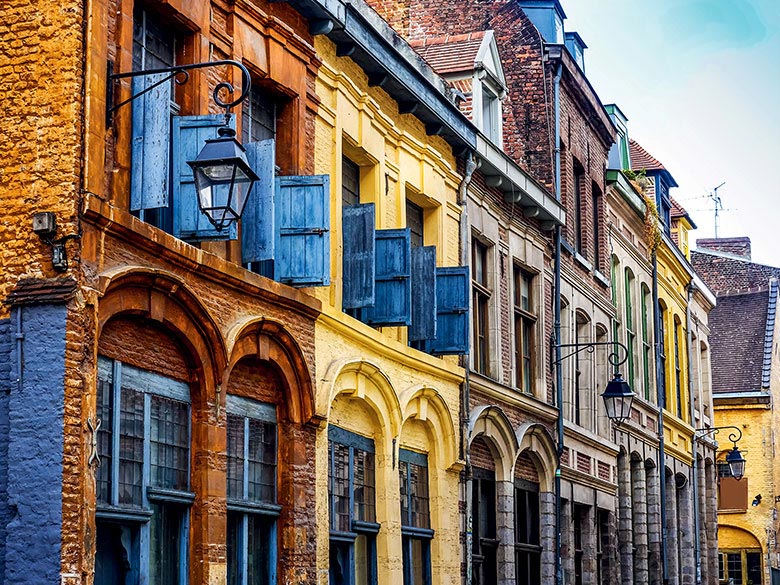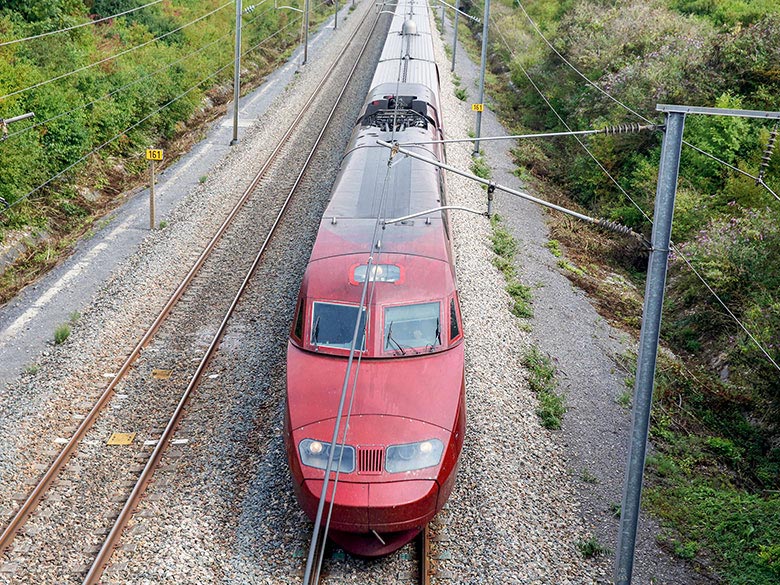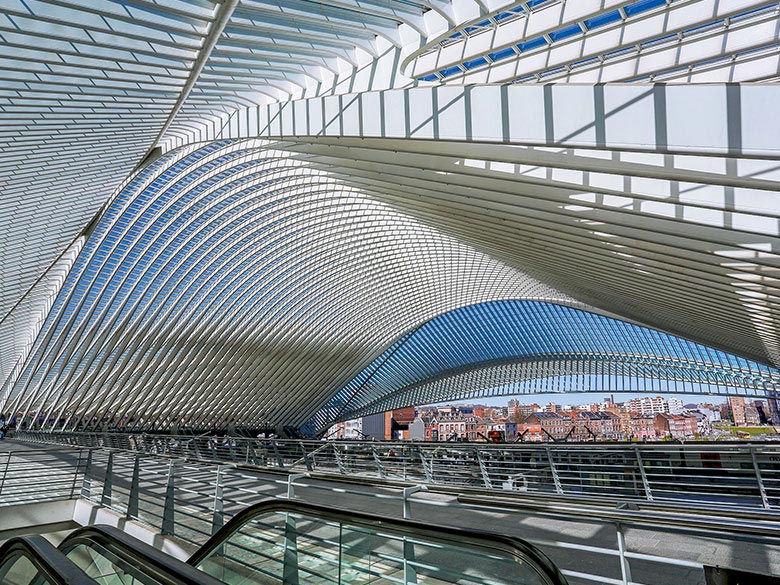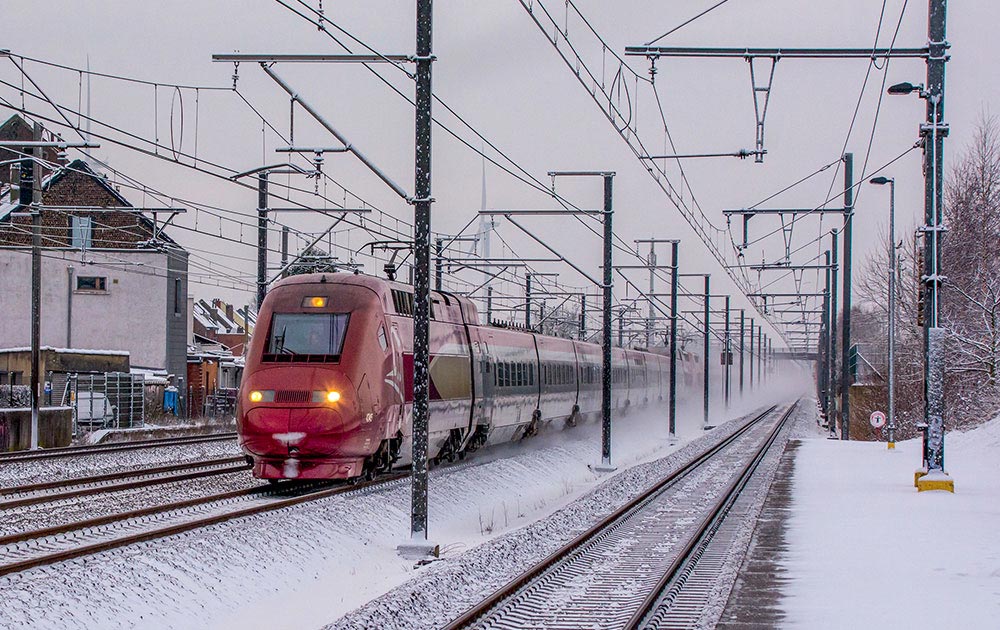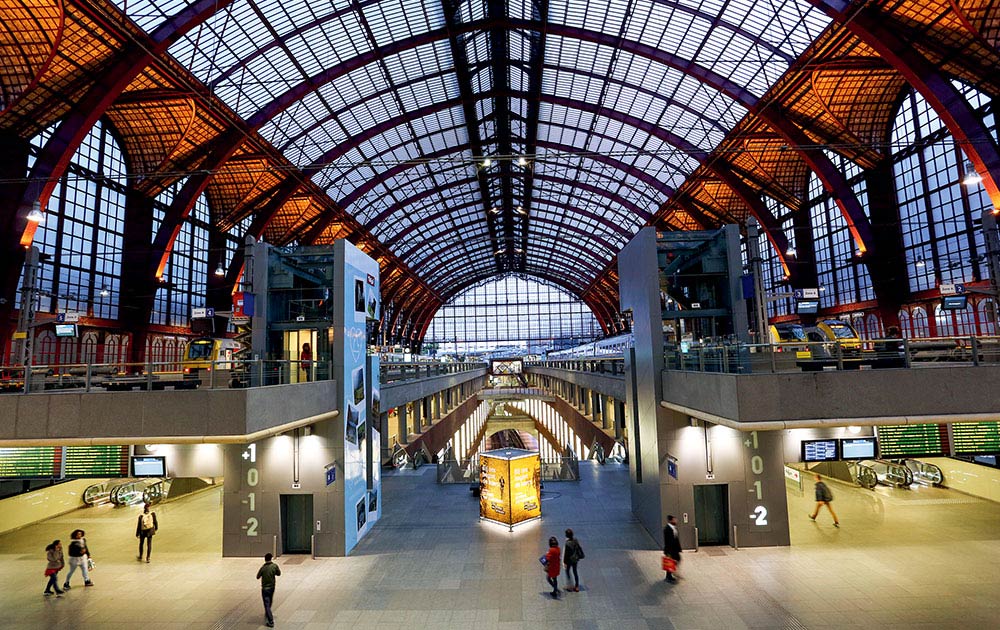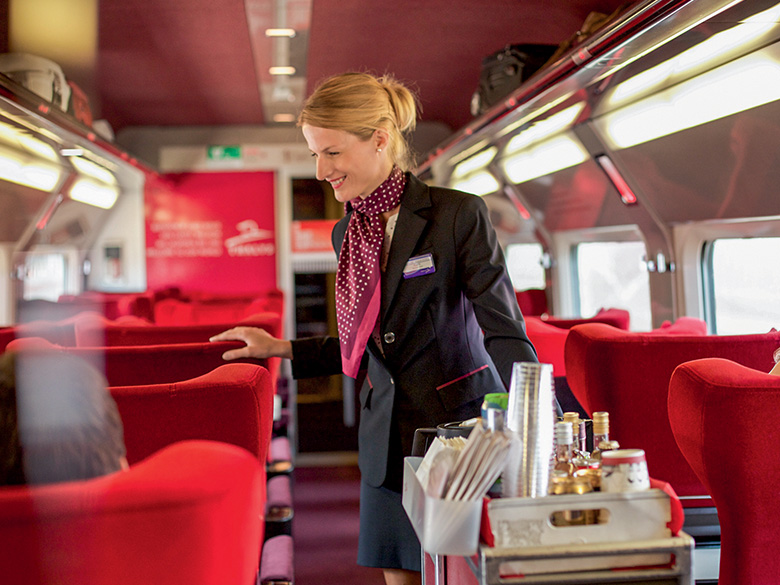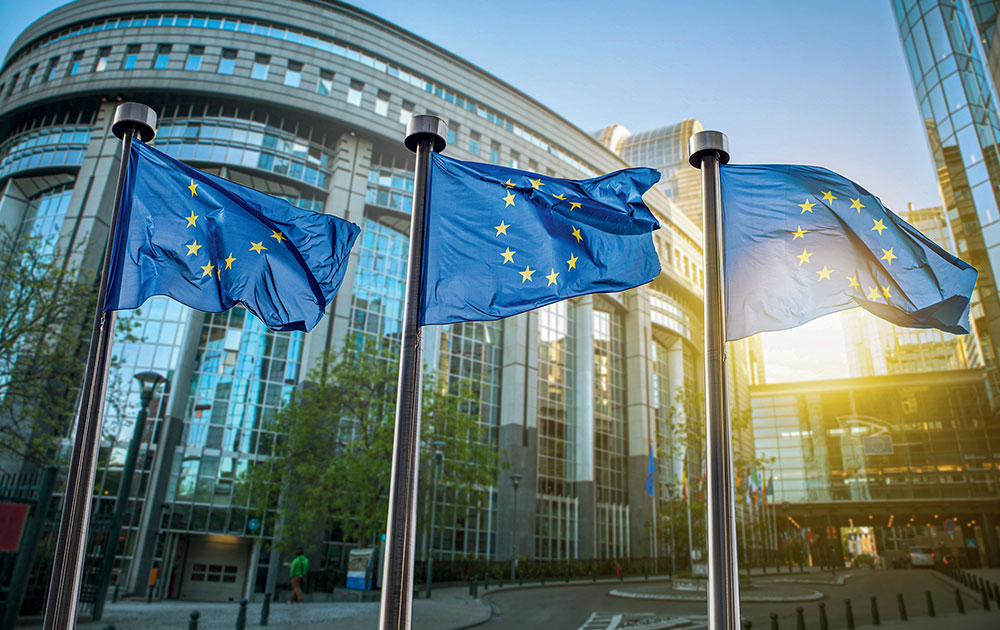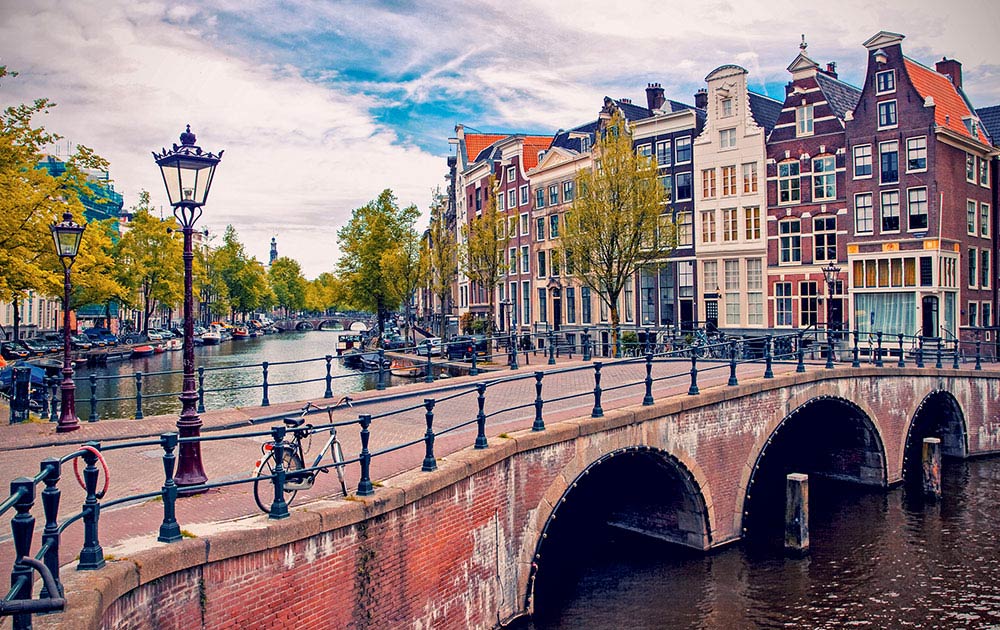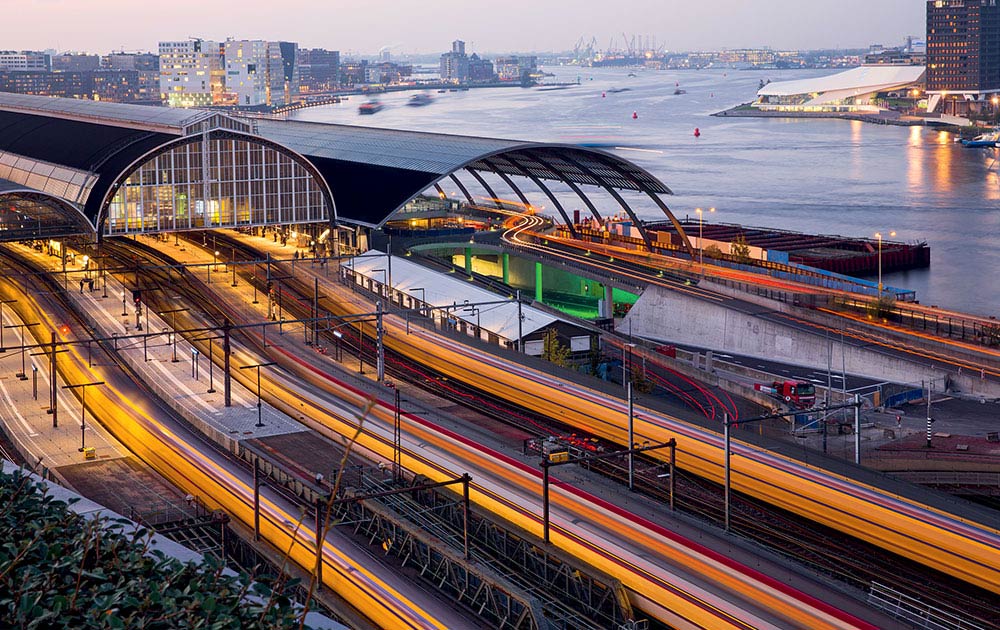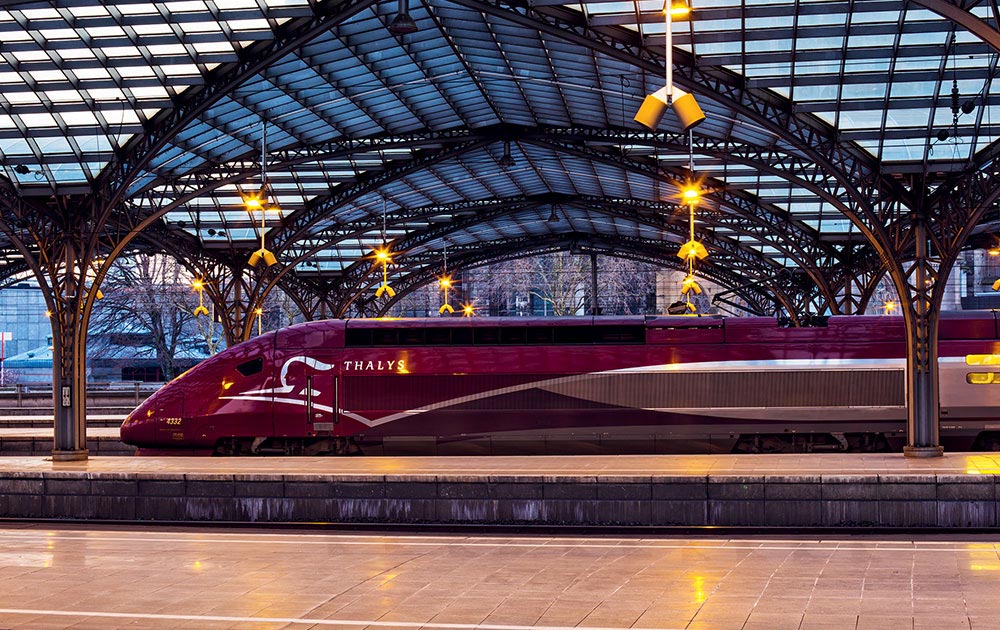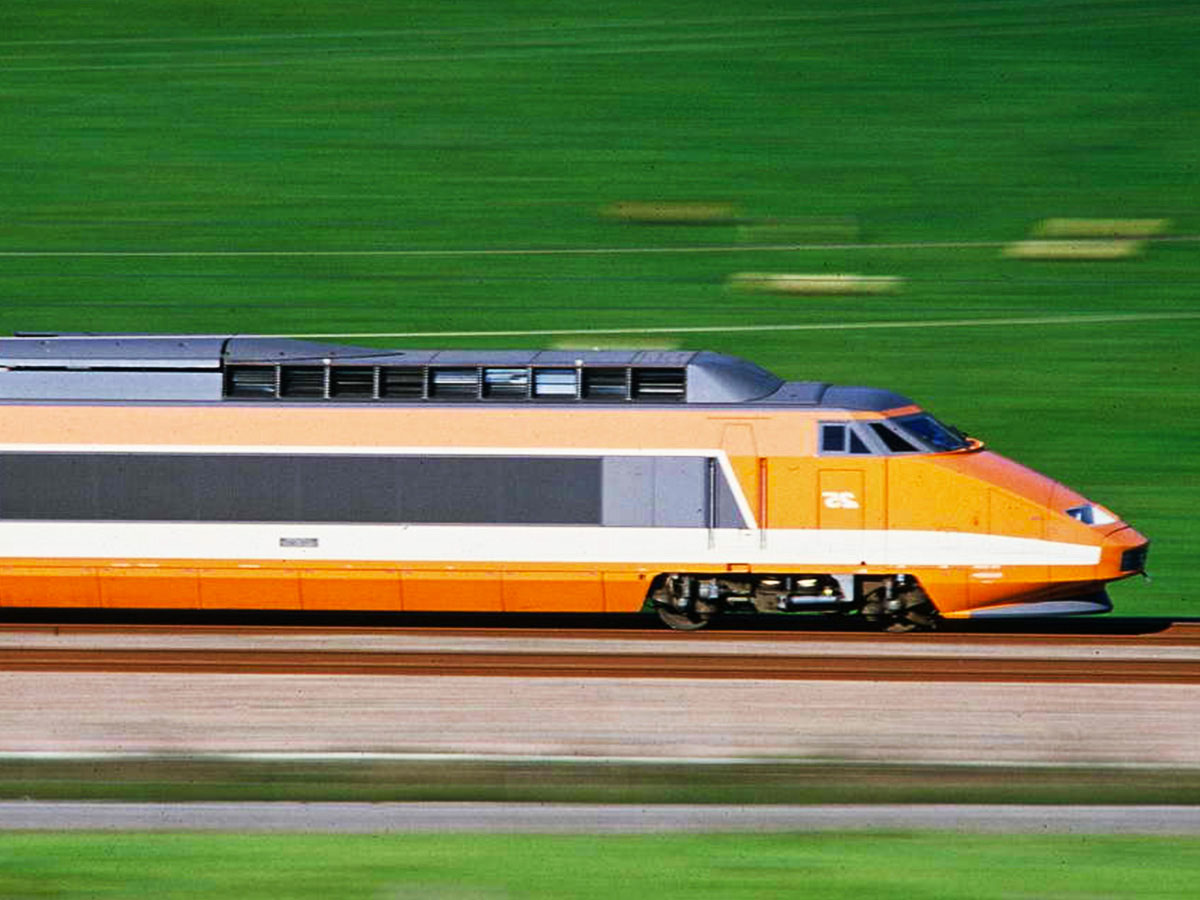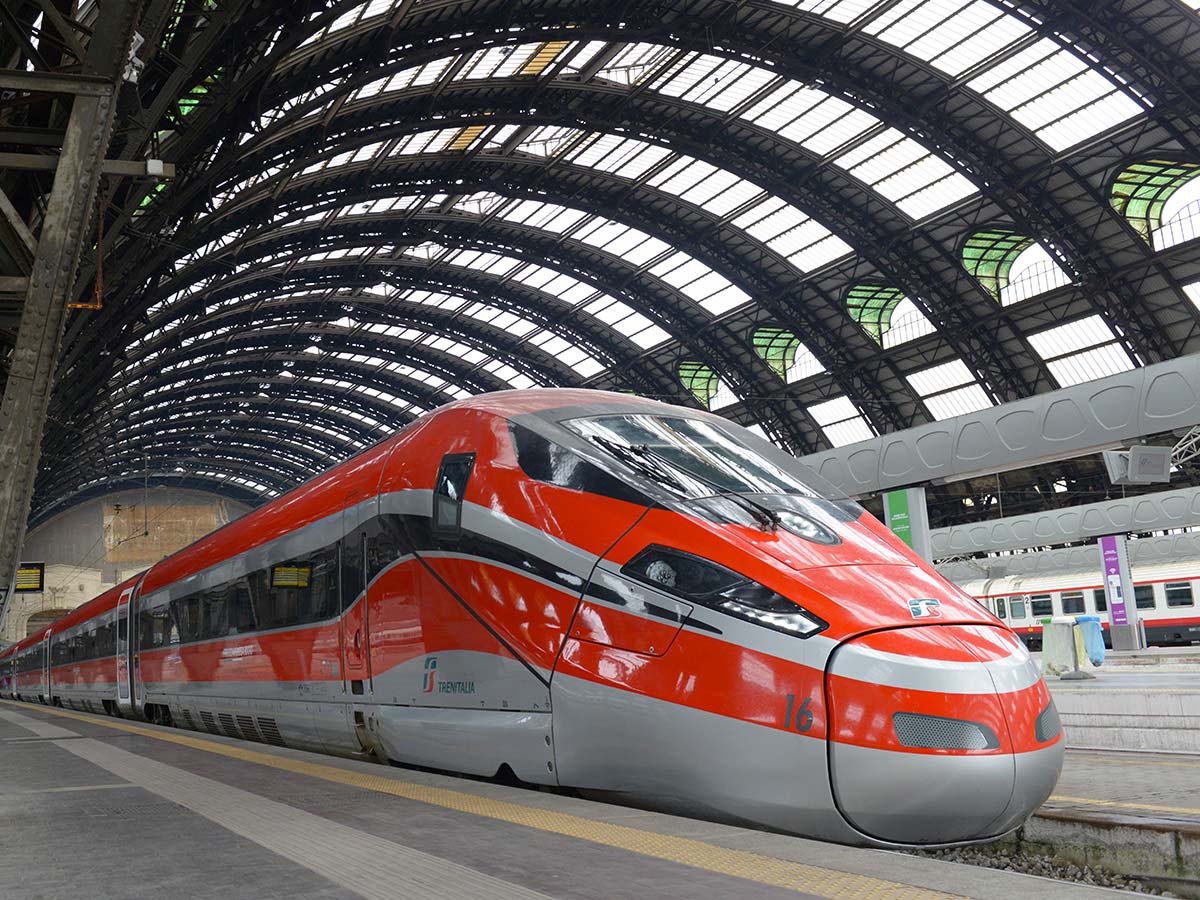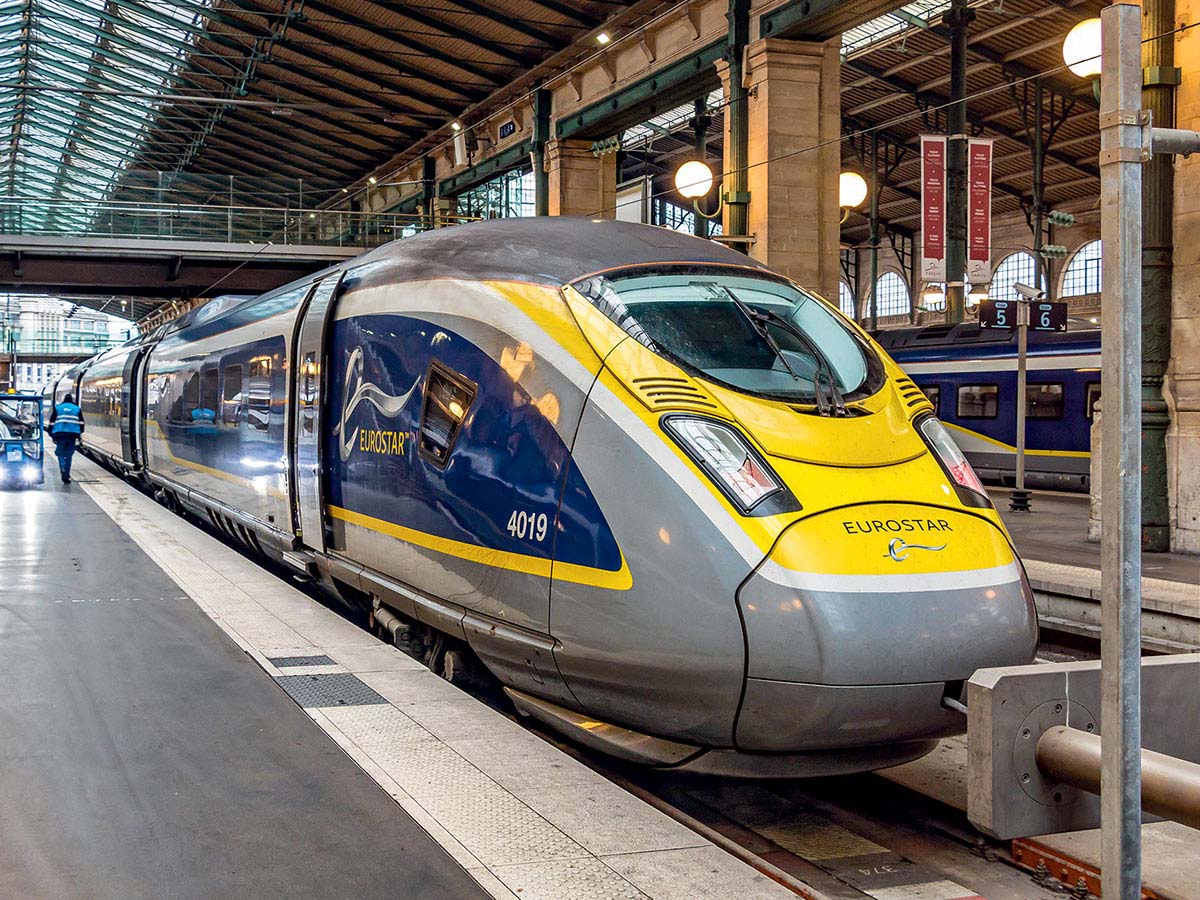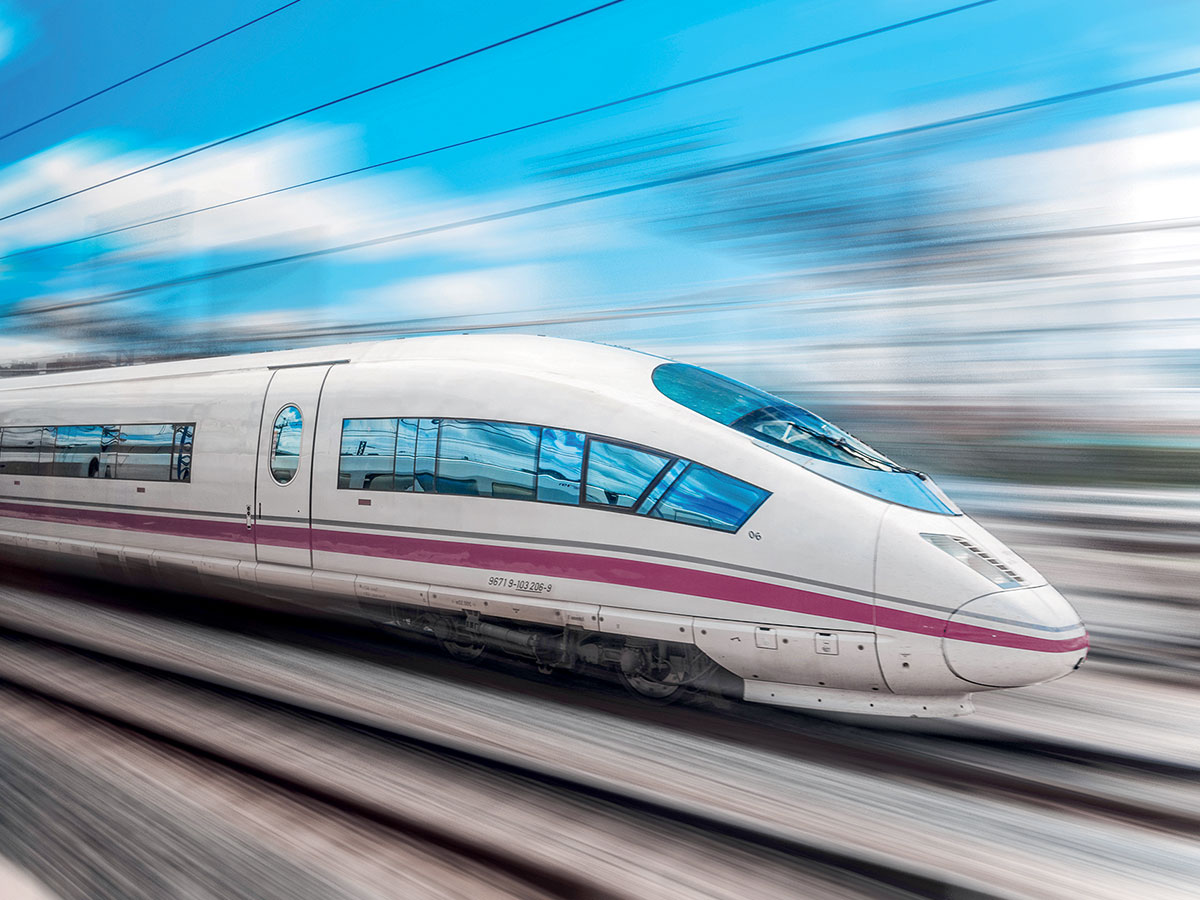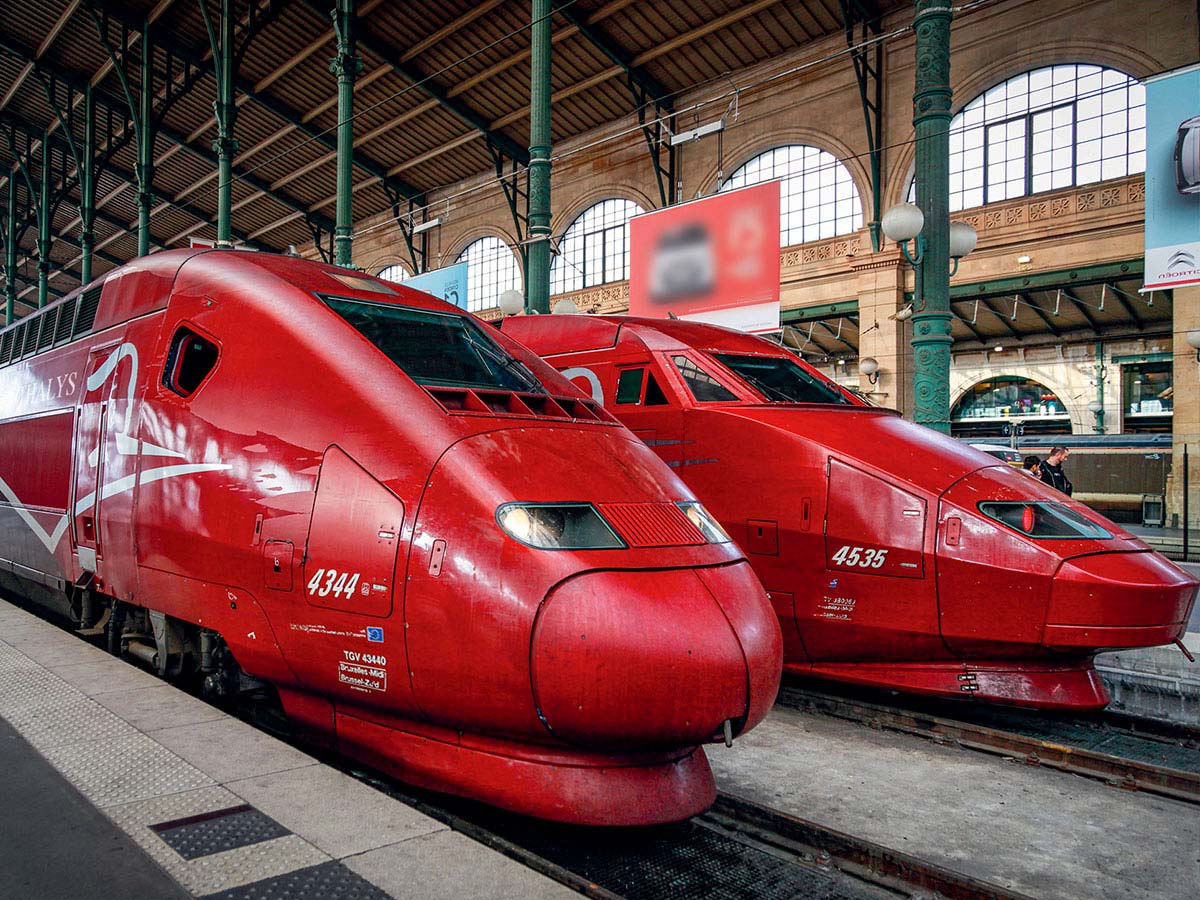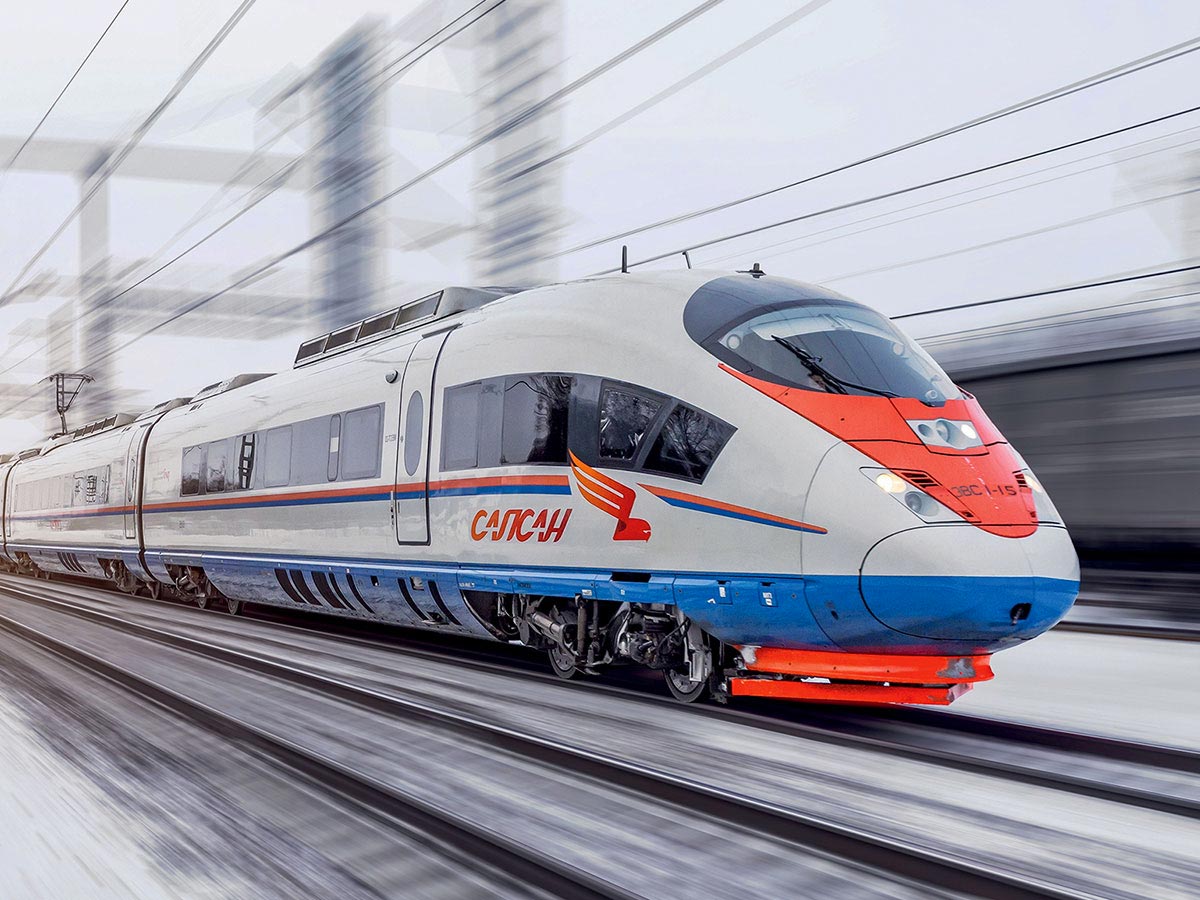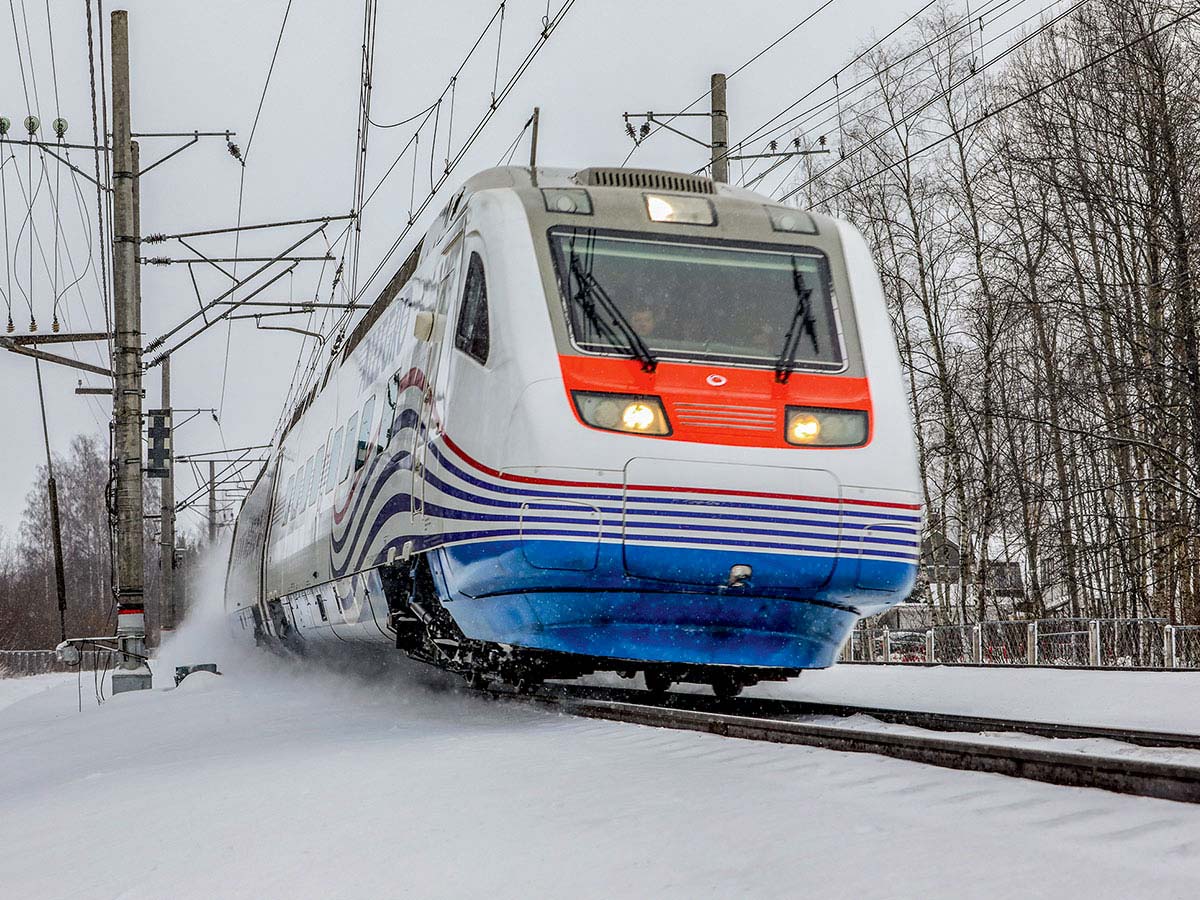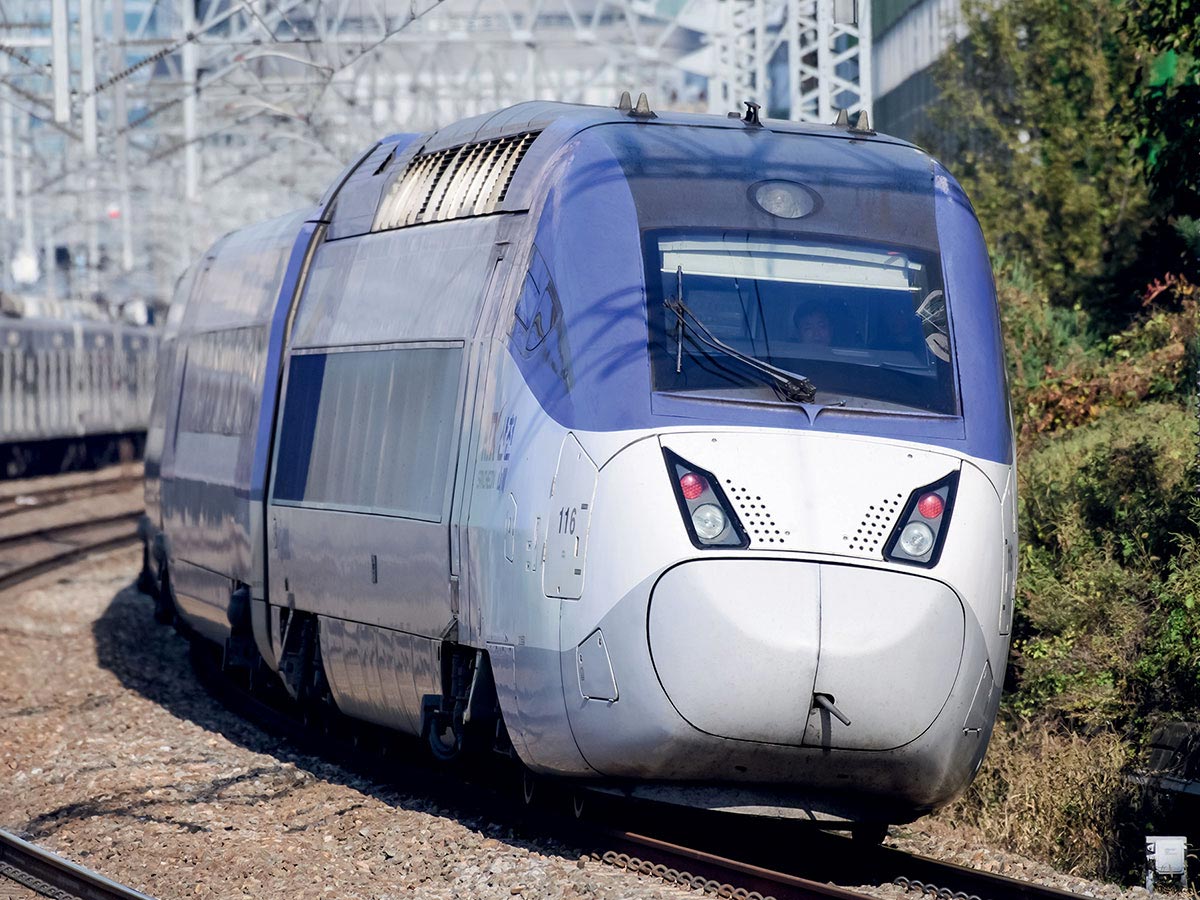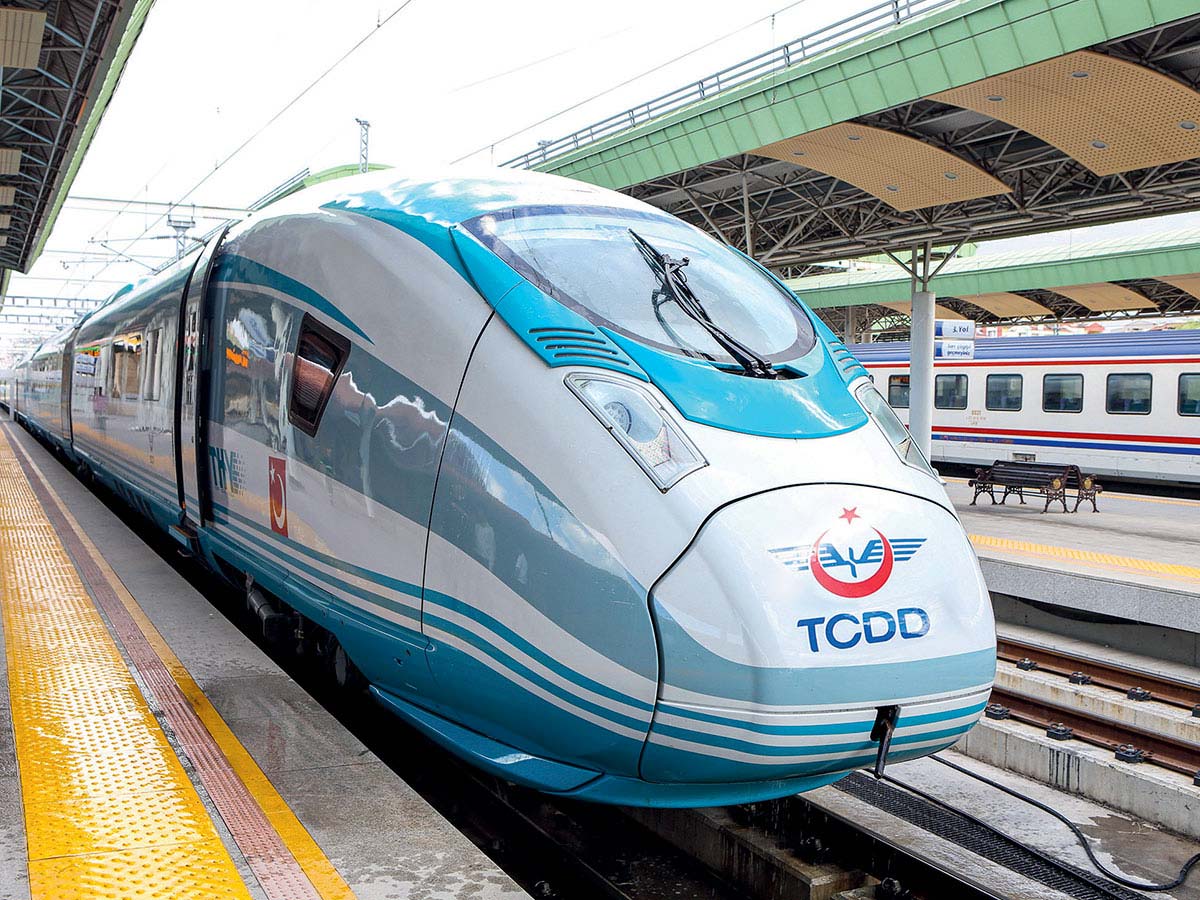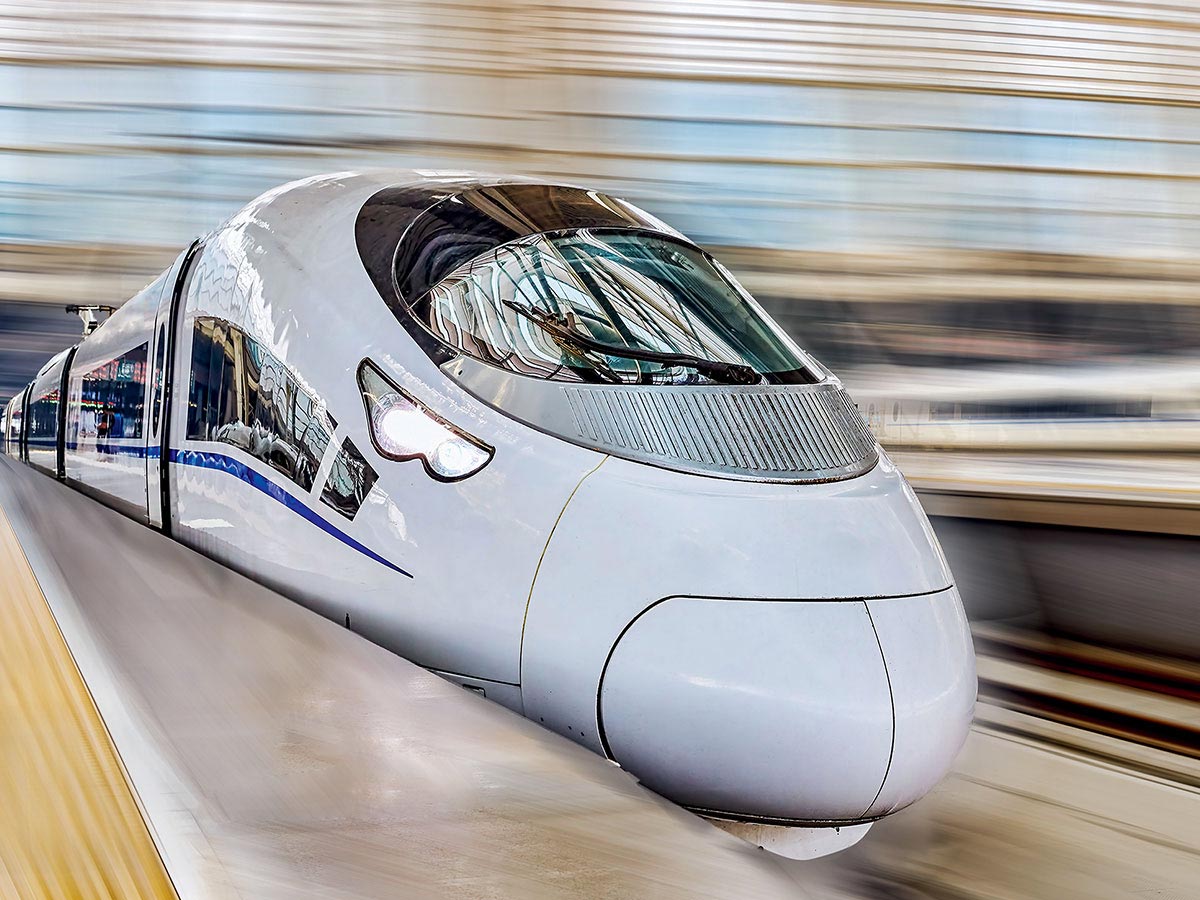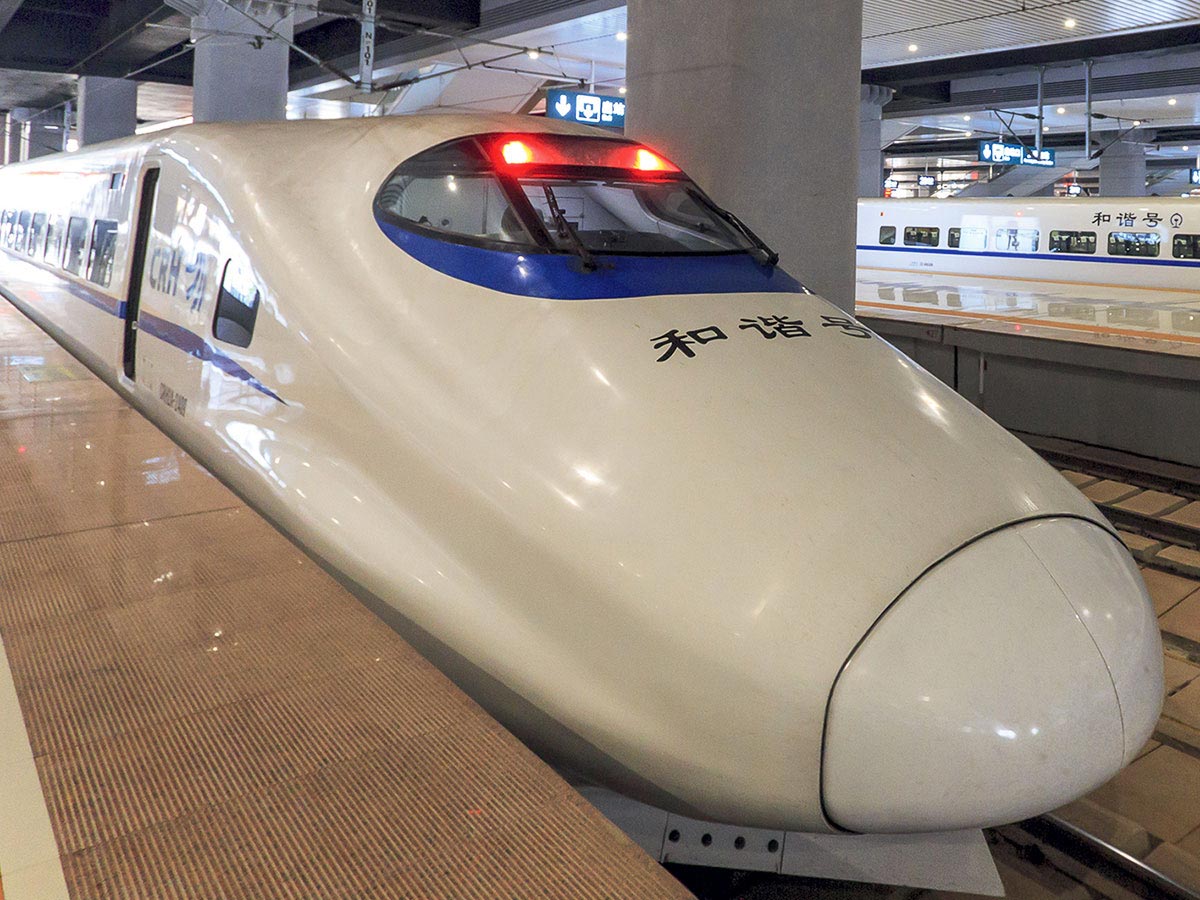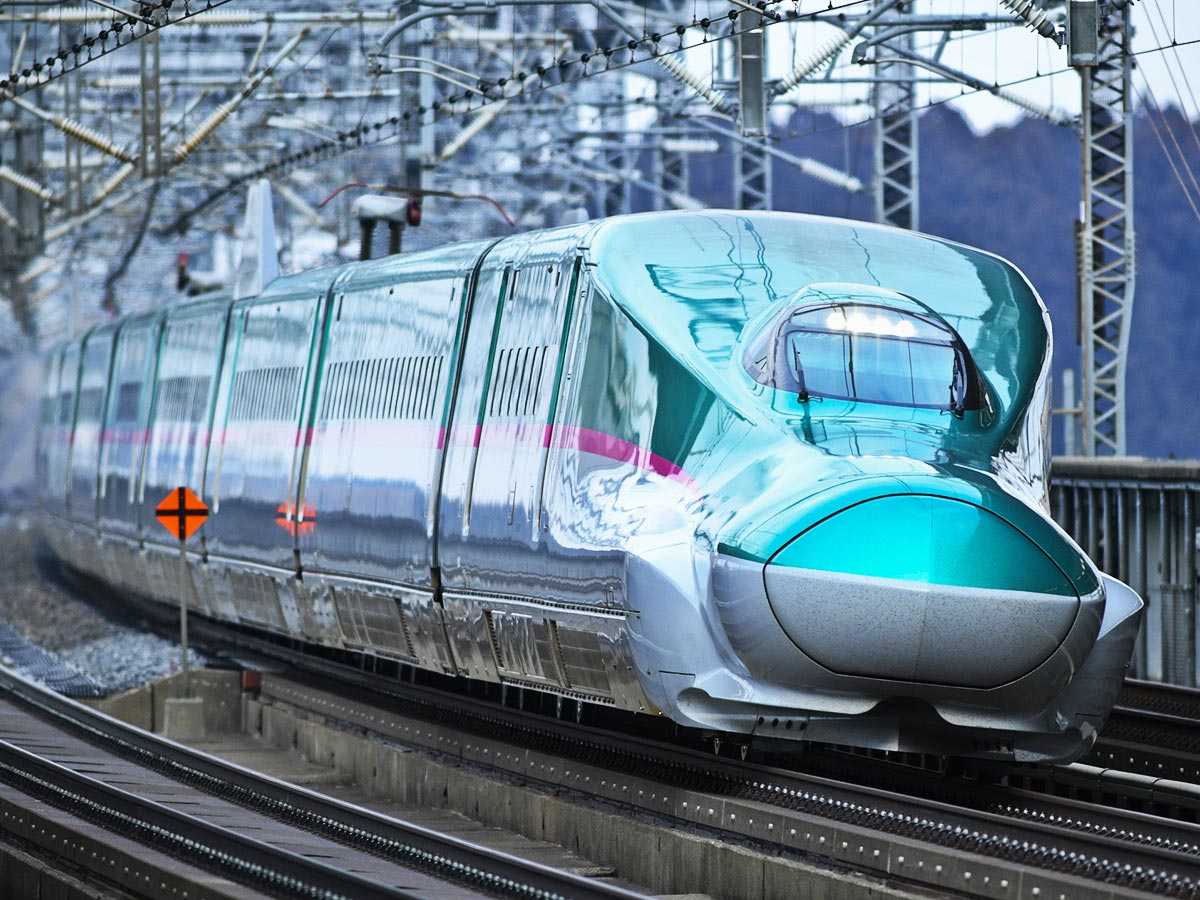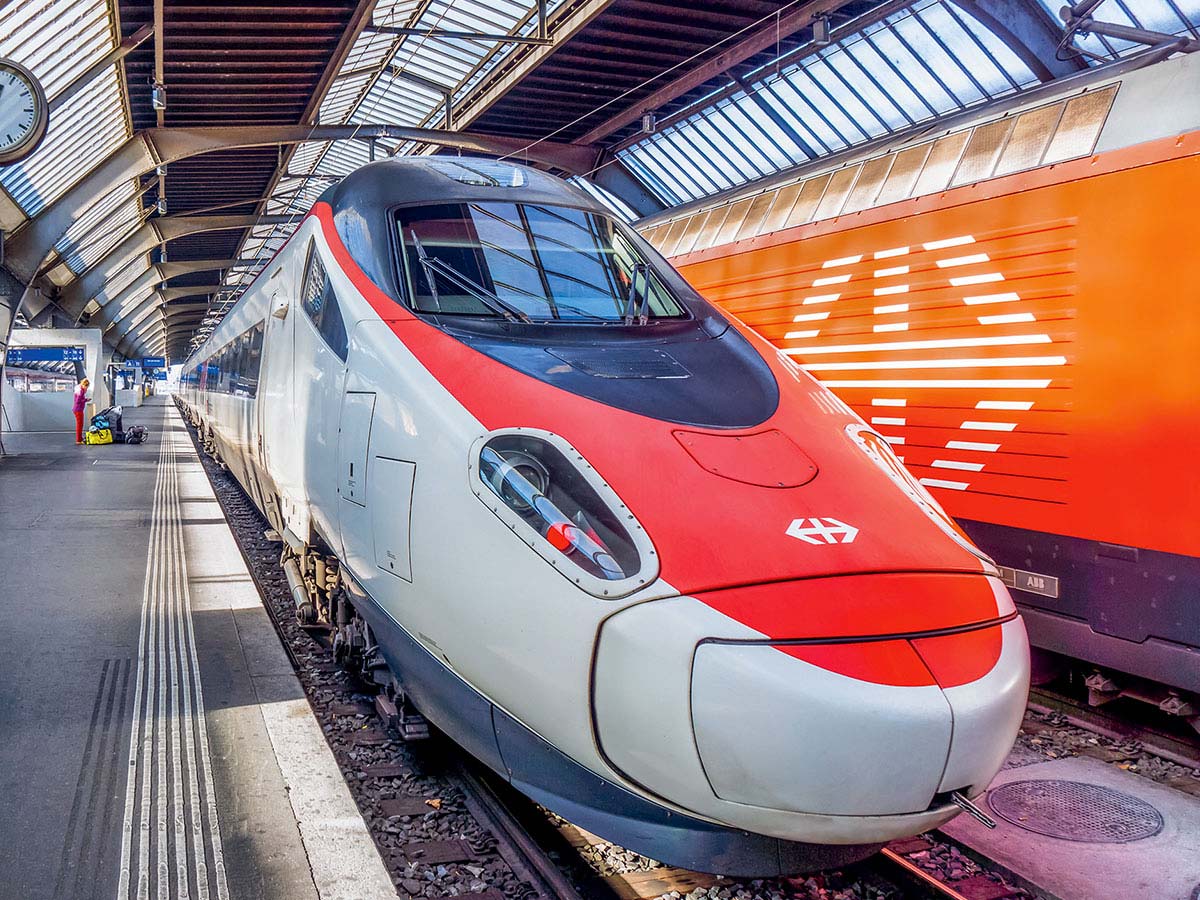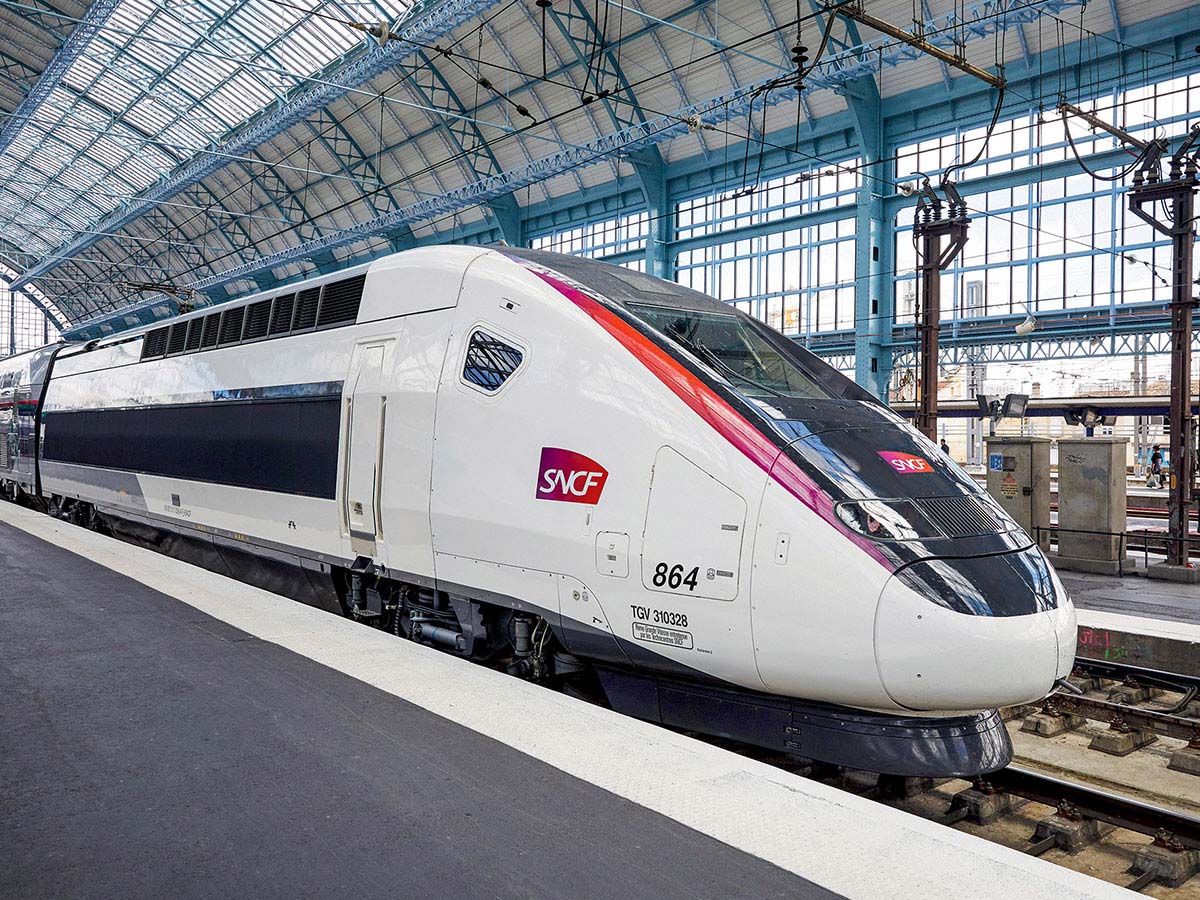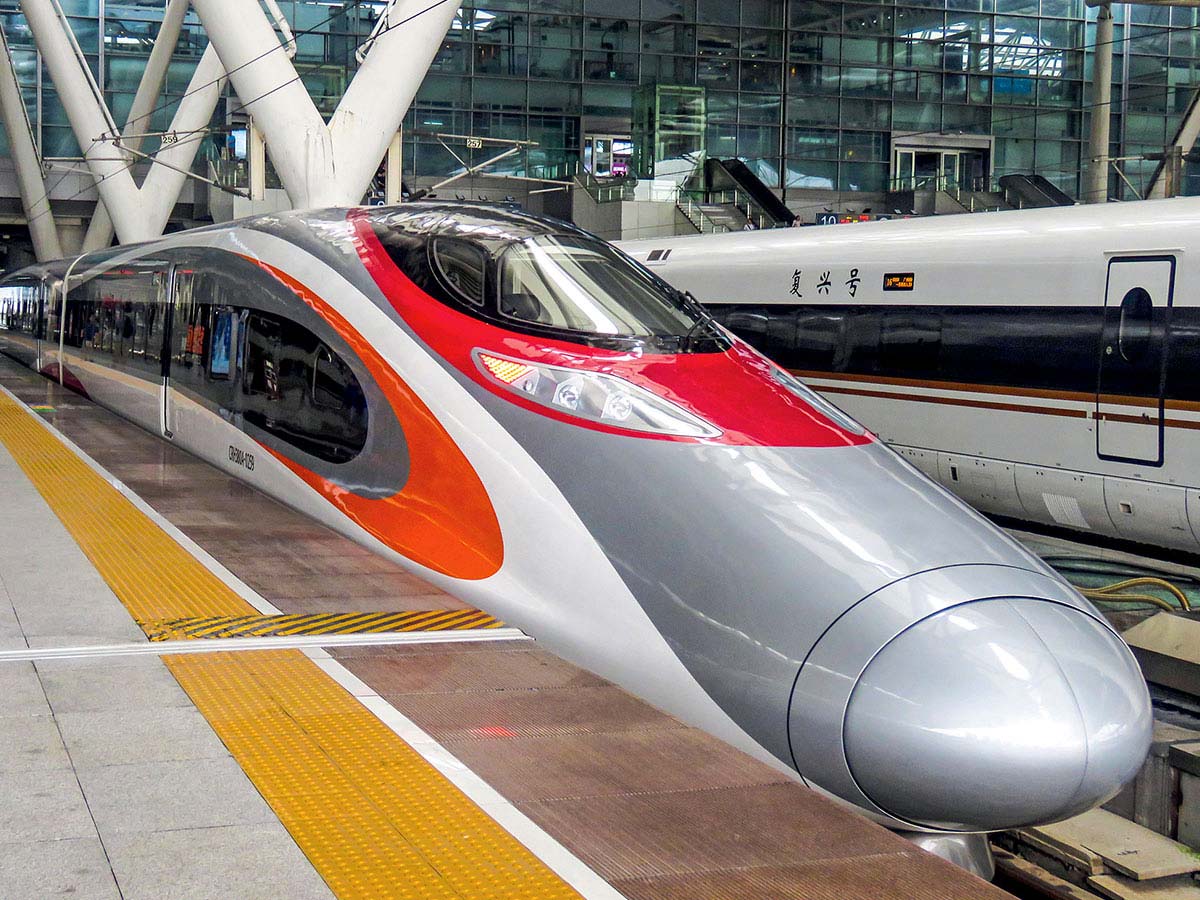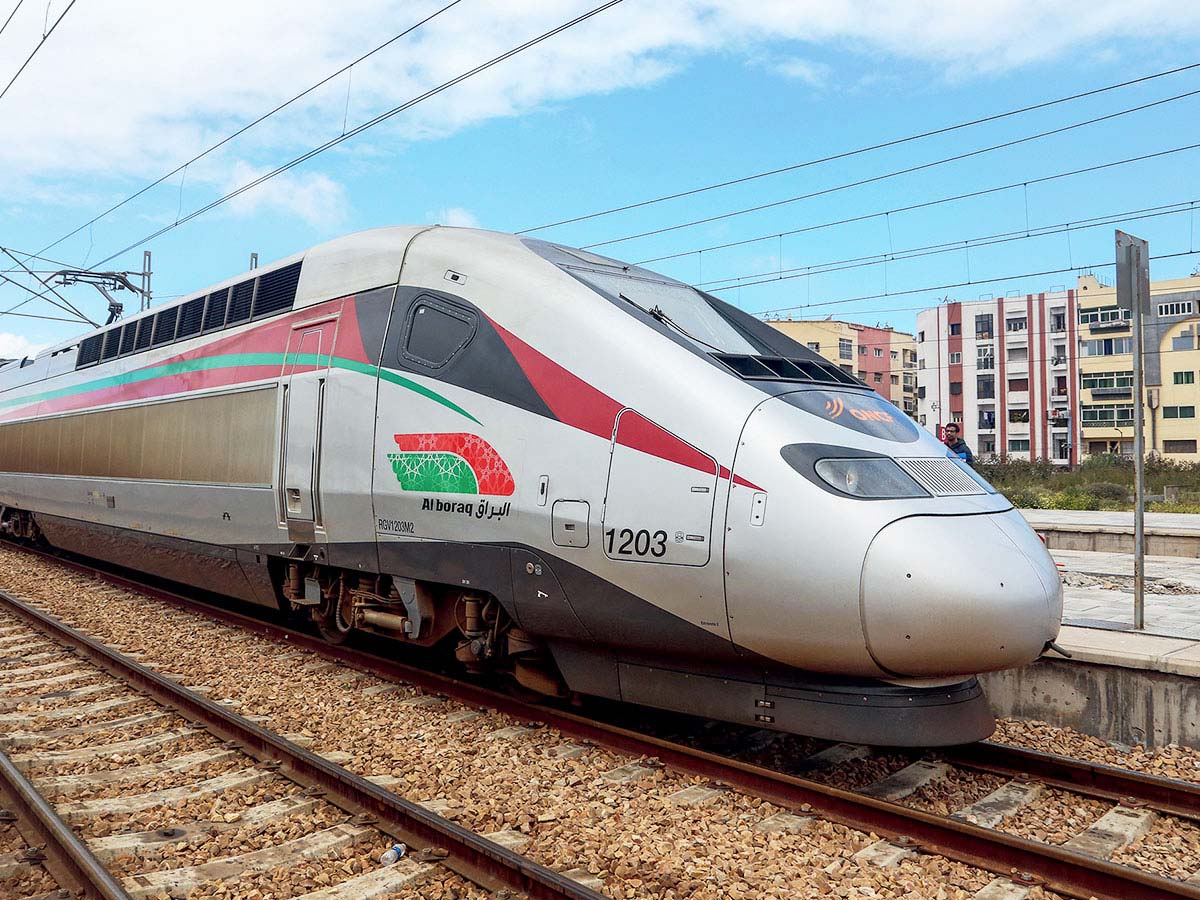PARIS > AMSTERDAM
PARIS > COLOGNE




2009 | France, Belgium, the Netherlands, Germany
Journey

More Info
- Length in km:
> Paris-Brussels: 305 km
> Brussels-Amsterdam: 218 km
> Brussels-Cologne: 227 km - Name of the train: Thalys
The signature of the Maastricht Treaty, in 1992, facilitated exchanges between countries and encouraged the construction of shared infrastructures. Starting in 1996, boosted by the success of the French TGV, Thalys has reconfigured the trans-European rail landscape. By connecting the neighbouring countries of France, Belgium, the Netherlands and Germany, this innovation sets the stage for a truly continental network. With the support of a powerful European investment project, Paris-Brussels became the world’s first cross-border high-speed line. The Belgian capital has since become a transport hub for high-speed traffic between Paris, London, Antwerp, Amsterdam, Liège and Cologne. A formidable technical achievement for Thalys, whose ultra-performing systems and equipment open the way for traffic to circulate within four European countries with varying electric standards.
Leaving Paris
Steps away is the Saint-Martin Canal. A must-see destination for lovers of street art, the leaf-shaded spaces, romantic paths and water-locks of the canal make it one of Parisians’ preferred neighbourhood strolls. Like Montmartre, art libraries, designer boutiques, and charming cafés give the area a unique atmosphere, which was immortalised in the famous French film The Fabulous Destiny of Amélie Poulain. Situated next to the Gare de l’Est, where high-speed trains leave for Strasbourg, the Gare du Nord is the largest rail station in Europe. Each day hundreds of thousands of travellers pass through the station, destined for Lille, England, Belgium or the Netherlands. Built in the style of a neoclassical palace, the edifice boasts a majestic façade adorned with monumental sculptures representing the great cities of northern Europe.
Renovated time and again in response to greater traffic volume, the station is undergoing a major transformation in anticipation for the Olympic Games in 2024. Existing spaces will be redesigned, and the total surface area will be tripled with the addition of a new wing to the historic building. The exceptional scale of the station as well as the diversity of services on offer – not limited to those related to rail use – will transform the Gare du Nord into a real “city” within the city of Paris. The new structure, bathed in light streaming through walls of glass, will house a shopping concourse, boutiques, restaurants and co-working spaces, as well as a concert hall. The rooftop of the newly-designed wing will feature wooded terraces and a kilometre-long trail for urban joggers.
Cross-border rail lines
The difficulties linked to the creation of a European rail network have been many. National networks are disparate, electricity energy supply and signalisation systems are different, as well as stationary facilities and operating procedures. Similarly, rail traffic is left-hand in France and in Belgium, while right-hand in the Netherlands and in Germany. In September 1993, the Paris–Lille line – the first link to open traffic toward London and Brussels - was completed, connecting the two cities in fifty-nine minutes. Three years later, the first Thalys rail cars began to run between the Gare du Nord and Antoing, just across the Belgian border. Belgium than undertook the highspeed project to reach Brussels, while developing its own national network.
The Paris-Brussels line was put into service in 1997, while work began on the modernisation of the Brussels-Cologne line with the creation of highspeed sections: Louvain-Ansen 2002, Chênée-Hergenrath 2009. That same year, the Netherlands in turn entered the high-speed project, with the inauguration of the Antwerp-Amsterdam line.
The north-south connection
In 1994, the Nord Europe LGV was part of a vast project to provide rail service in France. A high-speed line was built to the east of Paris, to avoid the capital’s centre while providing direct access from Brussels to Lyon or Marseille. Two major stations were built at this point: Charlesde- Gaulle Airport 2 TGV and Marne-la-Vallée-Chessy, the gateway to Disneyland Paris. The Thalys Soleil (sunshine) schedule thus connected Amsterdam and Brussels to Marseille in summertime and the Thalys Neige (snow) to the Alps (Chambéry, Albertville, etc.) in winter.
Paris-Amsterdam, the journey
From the Gare du Nord, Thalys train leaves the capital city, crossing the northern districts to work its way around the forested regions of Chantilly, Halatte and Ermenonville. It then crosses the viaduct at Verberie viaduct, a name well-known to historians. Indeed, here archaeological digs have discovered the traces of the oldest Gallic farm in Europe. The line runs adjacent to the Nord (north) motorway. Half-way between Amiens, known for its perfectly proportioned cathedral, and the lovely Art Deco façades of Saint-Quentin, the Haute-Picardie station rises over surrounding fields. The Thalys continues across the Santerre plateau, a rich agricultural region, and crosses the Somme River. Little red brick houses line the way in careful rows, framed by the rail car windows. The line passes south of Lille, a charming city of cultural with colourful Flemish houses, lively markets and a contagious zest for life. The Thalys crosses the French-Belgian border, tracing its course south of Tournai and the five spires of that city’s famous cathedral. Taking first the Autoing Viaduct above the Escaut Valley, then the long Arbre Viaduct, the train slows down upon approach to the Brussels-Midi station, in the heart of Belgium.
Brussels-Amsterdam, the journey
Antwerp is the last major city before the Dutch-Belgian border. This spectacular station, with its monumental staircase, copper-lined cupola and mullioned windows, has the air of a palace. The Thalys moves into the Netherlands and traverses the central Hoekse Waard region. The low-lying countryside, reclaimed from the sea, is studded with rivers and polders, stretching under vast skies as far as the eye can see. In the springtime, fields are carpeted with tulips, and the arms of windmills catch the wind. Rotterdam Centraal is one of a new generation of ultramodern and elegant rail stations. Indeed, in 2014 the station received the Brunel Award, in recognition of the most impressive achievements in the world of rail. On the other side of the Meuse River, the port bustles day and night with the constant flow of container ships. After traversing a 6-kilometre-long viaduct that straddles flooded lands, the train enters a long tunnel built to protect the pristine Leiderdorp reserve, the “green heart” of the Netherlands. The Thalys slows once more, stopping at Amsterdam-Schiphol Airport, and ends the voyage upon arrival in downtown Amsterdam.
Brussels-Cologne, the journey
After having crossed Brussels via tunnel, the train continues on its path without stopping at the Gare du Nord nor the station of Schaerbeek, known as the home of Train World, the rail museum. Neither does it stop in the university town of Louvain. The Thalys leaves the classical line behind for high-speed, and soon engages the long slope toward the Meuse Valley. Here we arrive at Liège, the ardent city. The aerial architecture of Guillemins station, designed by Santiago Calatrava, is spectacular. Having spanned the Meuse River, the Thalys climbs through the long Soumagne Tunnel, to the Herve plateau. Soon after crossing a beautiful red viaduct, the train enters Germany. In Aachen, a short stroll from the classical rail station reveals the secrets of the old city: the octagonal chapel of Charlemagne, part of the city’s Gothic cathedral, Roman ruins, the two belfries of Aachen Town Hall…Then the flat landscape of the plains begins. Leaving behind the open-cast lignite mines, the Thalys penetrates the vast conurbation of Cologne.
→ The city of Aachen, Germany.
A hard-fought route
The construction of the Nord-Europe high-speed line between Paris and the Belgian frontier met no major difficulties. And yet the story of its route is an epic one! From the origin of the project, the two northern French regions impacted by the passage of the high-speed rail line quarrelled over the route. Picardy proposed a line that would run near its capital of Amiens, while Pas-de-Calais recommended a path that would cut through Greater Lille. The latter was chosen due to the presence of the existing Nord motorway, to allow for the conservation of the great forests of the Oise region. The city of Amiens nonetheless received compensation: the creation of a new link, the Haute Picardie TGV station, located an easily accessible 45 kilometres from Amiens. The new structure was sited in an area of farmlands, and soon earned the nickname of “Beet Station”. Over time, the station has proved to be quite useful, as TGV trains stop here to bypass Paris for destinations like Lyon, Marseille, and Bordeaux. Lille also fought to defend the idea of a downtown station rather than the project’s proposed site ten kilometres away. Local authorities won the dispute, due to the decided advantage of having reserved building sites over the years to accommodate both the trains passing through and the construction of a new station. Lille-Europe was inaugurated in 1994, after major works were completed to move the line underground. The Nord-Europe track integrates beautifully into the landscape. Situated in a migration zone inhabited by deer and other large animals, the line is marked with strategically-placed passages for cervids, bucks, and wild boar.
Challenges for Belgium, the Netherlands, and Germany
The urban density of land in Belgium as well as the difficulties of interoperability between countries has complicated works considerably. It was necessary to overcome incompatibilities of signalisation and electrical operating systems, adapt maintenance centres, and automate all control stations. In the interest of conserving energy, Belgium installed solar panels and wind turbines near the railway rights-of-way. The Brussels-Midi Station – a hub for European communication - was entirely modernised to accommodate the arrival of high-speed. A 450-metre viaduct allows the Thalys train to cross the major motorways before entrance. But the greatest project is the renovation of Antwerp Station, a jewel in the crown of railway architecture.
Originally the terminus, the station has become a through station, and an essential stop on the Paris to Amsterdam axis. A dual track tunnel was dug 45 metres under the city, and two levels of additional track were added to a building dating back to the 19th century! A colossal technical achievement. The eastern branch of the Belgian LGV network was gradually equipped to receive Thalys trains. Between Brussels and Louvain, the two existing tracks were doubled, with the central tracks reserved for high-speed trains operating at 220 km/hr. The high-speed line from Louvain to Ans (61 km), connects with the modernised classic line until Liège. Between Liège and the German border, the high-speed segment (42 km) proved to be a complex construction project. Precipitous terrain and karstic zones prone to slides required the construction of impressive engineering structures. The Thalys traverses the Soumagne Tunnel (6,5 km), then the Battice Viaduct (1,300m), built to resist seismic activity that is common in the region. Some exquisite archaeological discoveries have seen the light of day thanks to these projects: an 80,000-year-old Neanderthal camp in Remicourt and a Gallo-Roman villa from the 1st century in Hoegaarden-Goudberg. From Aachen to Cologne, the classical line has been renovated. The Thalys trains run at speeds between 160 km/hr and 250 km/hr, depending upon the sections. In the Netherlands, a full third of the country lies at sea-level, and man-made land has been reclaimed via a system of dikes and drainage ditches. Here one might imagine the complexity of a high-speed line. Major works to terrace the land were required to lay track over water-soaked soil, made even more complex by the need to consolidate the line’s foundations in anticipation of changing sea levels.
A European railway company
The launch of the European network has favoured the development of a European railway company. Thalys, at its origin (in 1995) was a consortium between France, Belgium, the Netherlands and Germany, and went on to become, in 2015, an independent company in its own right, fully licensed and safety certified. The company passed the milestone of 7 million travellers in 2017.
→ Thalys trains at Gare du Nord in Paris.
European Thalys
The mythical Trans-Europ-Express (TEE), known as the "Star
of the North", incarnated luxury, speed and comfort in international
travel for forty years. Thalys is heir to this reputation
of excellence, and wears the same elegant colours of red –
symbol of power – and grey. This train is a technological marvel,
travelling at the speed of 300 km/hr, and thus meeting the
challenge of being the first high-speed train able to cross
Europe. The train makes use of four different rail networks
and is equipped with each corresponding signalisation,
safety and electrical system. More than a brand, the Thalys
is a European symbol. Its logo shows a face in profile above
a white lance, evoking speed, modernity, and comfort. The
colour scheme of red and grey was selected by the Dutch-
Belgian firm Total Design to better distinguish the train from
the French TGV. The firm is also responsible for the interior
design and the red seat upholstery.
This train introduces a new level of service. Agents liveried
in navy blue uniforms, accented with a touch of violet or
fuchsia, attend to travellers on the platform as well as on
board, ensuring a smooth travel experience. Moreover, the
three travel classes vary in terms of service. Standard is the
most economical; Comfort offers roomier and more comfortable
seating as well as conditions of exchange and reimbursement;
Premium offers in seat dining, international
newspaper distribution, and access to the Thalys lounge in
major stations. Upon arrival, the conductor, train manager,
ground personnel and attendants in traditional pillbox hats
greet descending passengers.
Thalys builds it communication upon providing a cultural link
between European capitals, using each country’s emblem:
the Eiffel Tower, the Atomium, and tulips. In anticipation of
future competition, in 2016 the Thalys Company introduced
trains operated by its low-cost subsidiary Izy on the Paris-
Brussels line.
Brussels
Capital of Europe and home to most institutions of the European Union, Brussels is a truly international city where all languages are spoken in a cultured and relaxed atmosphere. The soul of the city is the Grand-Place, whose lovely square cultivates aesthetic appreciation. In contrast is the Atomium, the futurist symbol of the city presented at the Universal Exposition in 1958. The neighbourhoods of Brussels delight with both the diversity of its architecture and the abundance of parks and large gardens throughout the city. Thalys has reinforced the position of the Belgian capital at the heart of Europe, reflected in the European quarter that is home to Parliament and the major centres of European decision-making as well as excellent museums and relaxing green spaces.
Amsterdam
The Dutch capital is the personification of a gentle way of life. Visitors enjoy losing themselves in the orderly maze of shaded canals, crossing back and forth over arched bridges. Cycling around the city, one might discover hidden lanes or bold architecture, then soak up the friendly atmosphere at a sidewalk café. The birthplace of Van Gogh, Rembrandt and Vermeer, Amsterdam is also the fourth-leading business centre of Europe and the financial heart of the country. The city’s complex topography, criss-crossed with canals and waterways, remains unaffected by the introduction of the Thalys, as the two kilometres of urban transit made use of existing classical tracks. Amsterdam Station, with its red brick Neogothic architecture, pays the price for its high-performing intermodality: the space is teeming with bicycles, buses and tramways, offering solutions for all travellers to meet their transportation needs.
Cologne
Just after the wide metal Hohenzollern Bridge that crosses the Rhine, the Thalys halts under the huge glass canopy of the main station, standing still in the ongoing ballet of trains on the way to new destinations: Düsseldorf, Essen, Dortmund... The must-see cathedral, emblem of the city, is a few steps away. Cologne is a welcoming and culturally-rich city, with its churches, archaeological and art museums, its specialties – eau de Cologne and beer -, young creative neighbourhoods and its university. Gourmet enthusiasts will enjoy the delicious chocolate museum. Christmastime is one of the best periods to visit Cologne. Seven markets light up the city, in the vicinity of the cathedral, in the old city, in the port, or in front of the historic castle.
The Thalys effect
The constitution of the high-speed lines Paris-Brussels-Amsterdam, Brussels-Cologne, and
Brussels-London have made it possible to create a European high-speed network without precedent.
Brussels was the first European hub to be connected to four major metropoles: Frankfurt (via
Liège and Cologne), London, Amsterdam and Paris.
Thalys has promoted exchange within the European territory, and many civil servants move frequently
from one country to another. By linking Paris and Brussels in 1 hr 30 mins, and Brussels-
Cologne in 1 hr 50 mins, Thalys has effectively replaced air travel.
These European liaisons have boosted tourism, even more so as the high-speed train arrives
directly into Dutch and German downtown areas. Schiphol Airport, in the Netherlands, which boasts its own station on the high-speed line, has increased its status as an international hub. In order
to facilitate cross-border trips within Europe, seven countries have entered a cooperation agreement
known as Railteam, created in 2007. Ticket purchase is simplified, travel information is multilingual,
correspondences are adapted and frequent travellers benefit from business lounges in all
major cities.
a selection of HIGH-SPEED LINES by creation date
1964

TOKYO > OSAKA
1992

TURIN > NAPLES
1992

MADRID > SEVILLE
2002

COLOGNE > FRANKFURT
2008

BARCELONA > MADRID
2010

SEOUL > BUSAN
2011

BEIJING > SHANGHAI
2014

ANKARA > ISTANBUL
2014

LANZHOU > URUMQI
2016

SHANGHAI > KUNMING
2016

TOKYO > HAKODATE
2016


ZURICH > MILAN
2018

BEIJING > HONG KONG
2018

TANGIER > CASABLANCA
